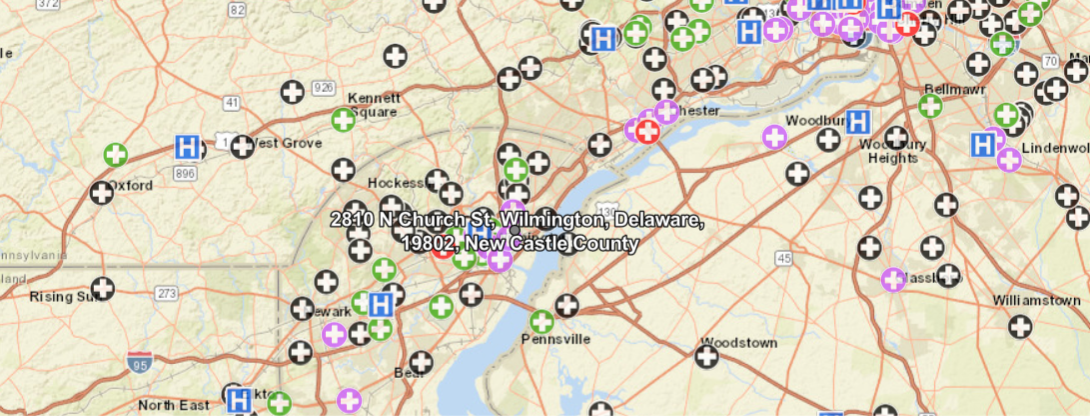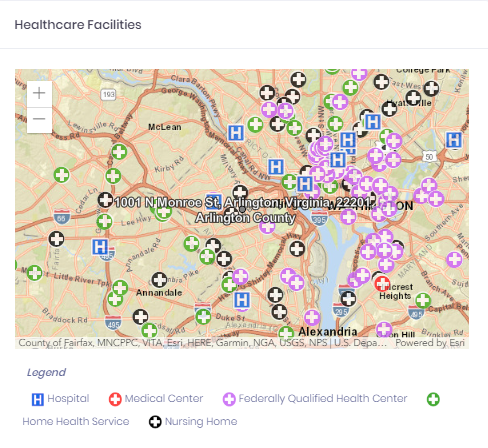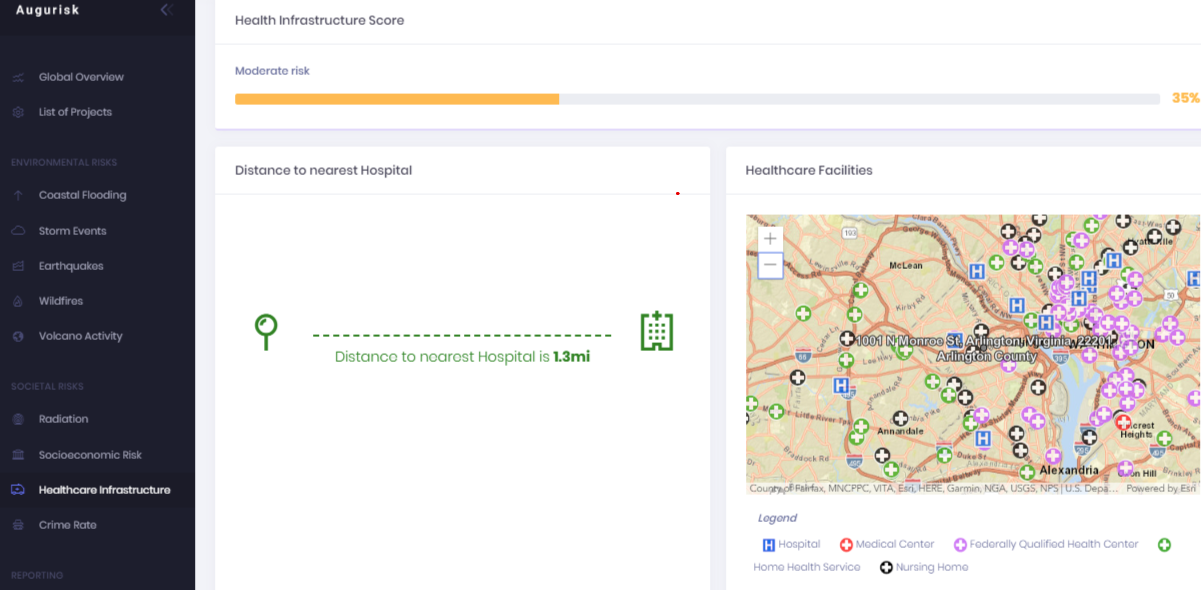Preparing for the Coronavirus Pandemic in the U.S.: Healthcare and Safety Advice
As the COVID-19 pandemic continues to spread around the world at alarming rates, communities require urgent support to ensure their safety.

As the Coronavirus disease (COVID-19) pandemic continues to spread around the world at alarming rates, communities require urgent support to ensure their safety. Access to adequate healthcare services and facilities has become the main priority for all the affected countries. This article will give you the latest information and advice to help you prepare for the potential risks of the COVID-19 epidemic, protect your family and community.
Symptoms of COVID-19
The first symptoms like shortness of breath, cough, and fever can appear between 2-14 days after exposure to the novel coronavirus. The short video below illustrates how COVID-19 affects the human body, what symptoms to look out for and who can be at high risk.
Monitor any symptoms carefully, and if you have an emergency warning sign, seek medical attention immediately.
Are you at risk?
Anyone can get infected by COVID-19, but the severity of illness can range from very mild symptoms to serious health complications, especially for adults over 65 years.
According to the National Center for Immunization and Respiratory Diseases (NCIRD), people of any age with serious underlying medical conditions might be at higher risk for severe illness from COVID-19, including those with:
- Chronic lung disease or asthma
- Serious heart conditions
- Immunocompromised conditions (e.g. immune deficiency, smoking, cancer treatment, bone marrow or organ transplants, HIV or AIDS, and use of immune weakening medications like corticosteroids).
- Diabetes, renal failure, or liver disease
- Severe obesity
Global COVID- 19 pandemic
According to the latest WHO report, people in at least 203 countries and territories have been infected by COVID-19. Worldwide, there are currently 861 305 confirmed cases resulting in 42 365 deaths, and 178 718 recovered after being ill (as of April 1, 2020). This live tracker of COVID-19 Global Cases developed by the Center for Systems Science and Engineering (CSSE) at Johns Hopkins University (JHU) shows the newest updates of the pandemic worldwide.
The Global Health Security Index assessment of the healthcare capabilities across 195 countries, concludes that no country is fully prepared to handle the risks of a massive epidemic or pandemic. The report concludes that the national health security systems around the world lack the fundamental capacities and capabilities required to prevent, detect, and respond to outbreaks of significant infectious disease.
The GHS Index analysis suggests that vulnerability to political, socioeconomic, and environmental risks severely weakens the national preparedness and response to health emergencies and viral outbreaks.
COVID-19 epidemic in the U.S.
The US has declared a national emergency due to the COVID-19 outbreak, reporting over 163,539 cases and 2,860 deaths in total across 50 states, District of Columbia, Puerto Rico, Guam, Northern Marianas, and US Virgin Islands (as of March 31, 2020). The US now has the most confirmed cases worldwide. You can see all the current confirmed COVID-19 cases reported by countries and territories across the Americas in the WHO interactive map.
The analysis by the Centers for Disease Control and Prevention (CDC) concludes the COVID-19 pandemic is currently accelerating across the United States nationally. However, different regions report disparate levels of COVID-19 impacts on their population. The duration and severity of the pandemic impacts largely depends on the available healthcare infrastructure and the measures of public health response.
According to the USA Today, a rapid surge of patients from the outbreak of COVID-19 would leave US hospitals without enough beds, ventilators, and I.C.U.
How to prepare for a COVID-19 outbreak
It is difficult to predict the full scope of potential impacts of a COVID-19 outbreak on the U.S. communities. Our knowledge of this virus is limited as it’s quite new, and the U.S. healthcare system does not have much recent experience of handling a pandemic at a large scale.
Nevertheless, you can take preventive action now to plan and protect your family in case of a COVID-19 outbreak in your community. To help you prepare your action plan, we have compiled a list of safety recommendations based on the sanitary advice from the U.S. authorities, international best practices, and professional advice from our health and safety experts.
The main preventive measures include:
- Stay informed. Learn how the virus spreads: COVID-19 Key Facts | CDC
- Watch out for symptoms of Coronavirus and when to seek medical help
- Follow the public health information updates for Coronavirus Disease 2019 (COVID-19) | coronavirus.gov
- Avoid public places and close contact with other people.
- Clean your hands often using soap and water or a hand sanitizer with at least 60% alcohol content.
- Clean and disinfect your home and frequently touched surfaces daily.
- Learn what to do if you are sick and how to care for your family if they get sick.
- Prepare for possible illness - create an emergency household plan in case you or your family members get ill, make sure you have information and contacts about the nearest available healthcare providers.
- Stay up to date with the latest research information for Coronavirus (COVID-19) | National Institutes of Health
- Monitor the COVID-19 situation dynamics in your community:
CDC has issued a guideline on Mitigation Strategies for Communities describing the local factors and characteristics that must be considered for developing appropriate mitigation measures to protect communities from COVID-19 transmission.
The key local factors include:
- Epidemiology
- Community Characteristics
- Healthcare capacity
- Public health capacity
The guideline emphasizes the individual responsibility for implementing the recommended personal-level actions, protecting people at increased risk of severe illness, and supporting access to the critical infrastructure or services to individuals at increased risk of severe illness. Such a proactive approach can help minimize the morbidity and mortality, as well as the social and economic impacts of a COVID-19 outbreak on your community.
Augurisk Healthcare Infrastructure Assessment
Augurisk has developed an innovative platform for assessing risks from natural hazards, climate change, and societal risks, including a detailed risk assessment of Healthcare Infrastructure. It aims to help communities across the U.S. ensure health security for their families. The Augurisk Healthcare Infrastructure Assessment provides all the crucial information about your nearest hospitals and healthcare facilities.
If you think your home or business is at risk, you can complete a free risk assessment of Healthcare Infrastructure on our platform. You will need to provide your exact postal address, and our software will help you get a detailed map of all the healthcare facilities in your area including Hospitals, Medical Centers, Federally Qualified Health Centers, Home Health Services and Nursing Homes.

With an Augurisk account, you can also get a report about the Health Infrastructure risk score for your address and the exact distance to the nearest primary acute care or critical access hospital.

The Augurisk Health Infrastructure risk index is based on multiple risk components. It includes numbers of health practitioners in your county, the distance to the nearest primary acute care or critical access hospital using the HIFLD Hospitals Database and County Health Rankings & Roadmaps, as well as the size of the nearest hospital with details of its number of beds. All values are normalized to a 0-100 scale.
This data from the Augurisk Healthcare Infrastructure Assessment can help you understand whether your home or business is at high risk and get better prepared for any health emergencies and outbreaks.
If you have any questions or need help with your Healthcare Infrastructure Assessment, get in touch with our team.
